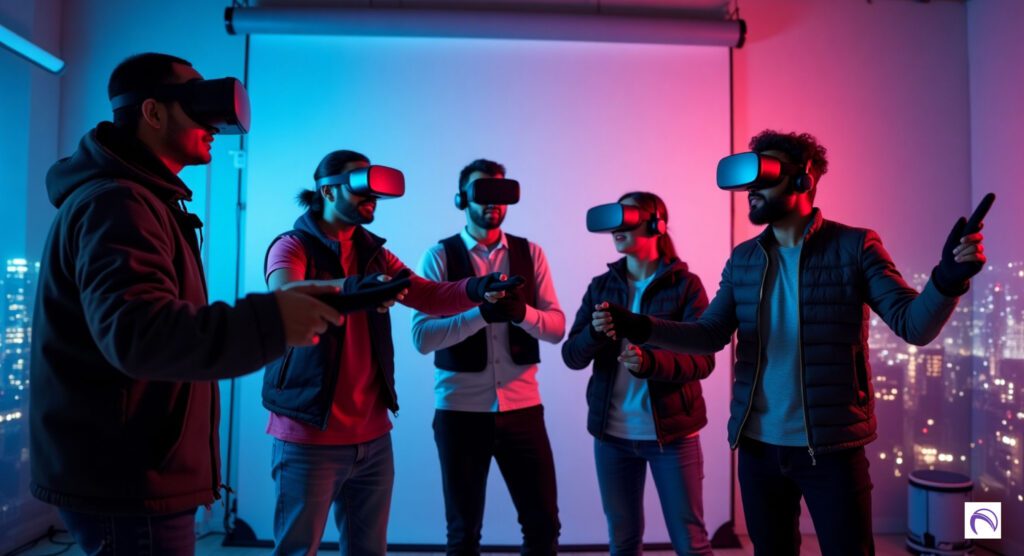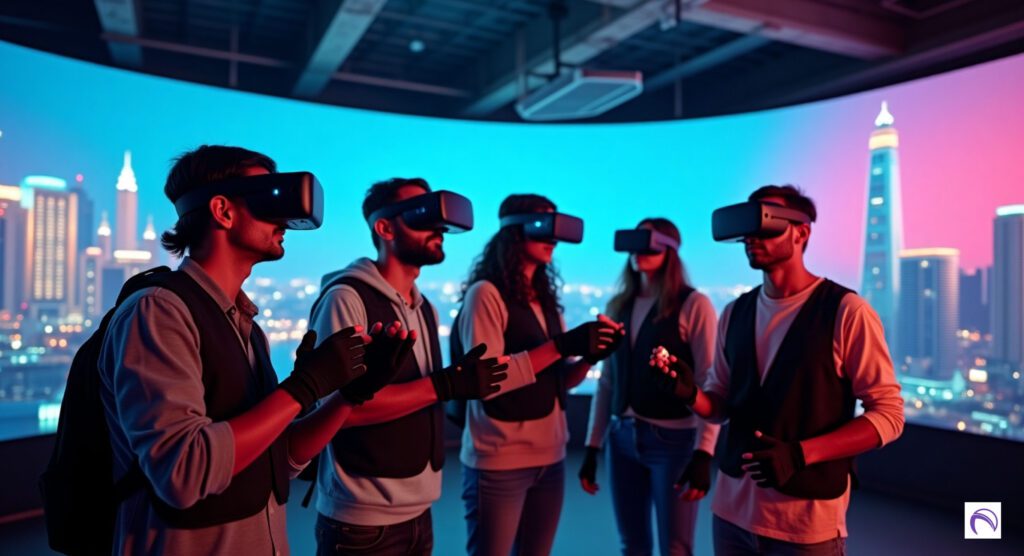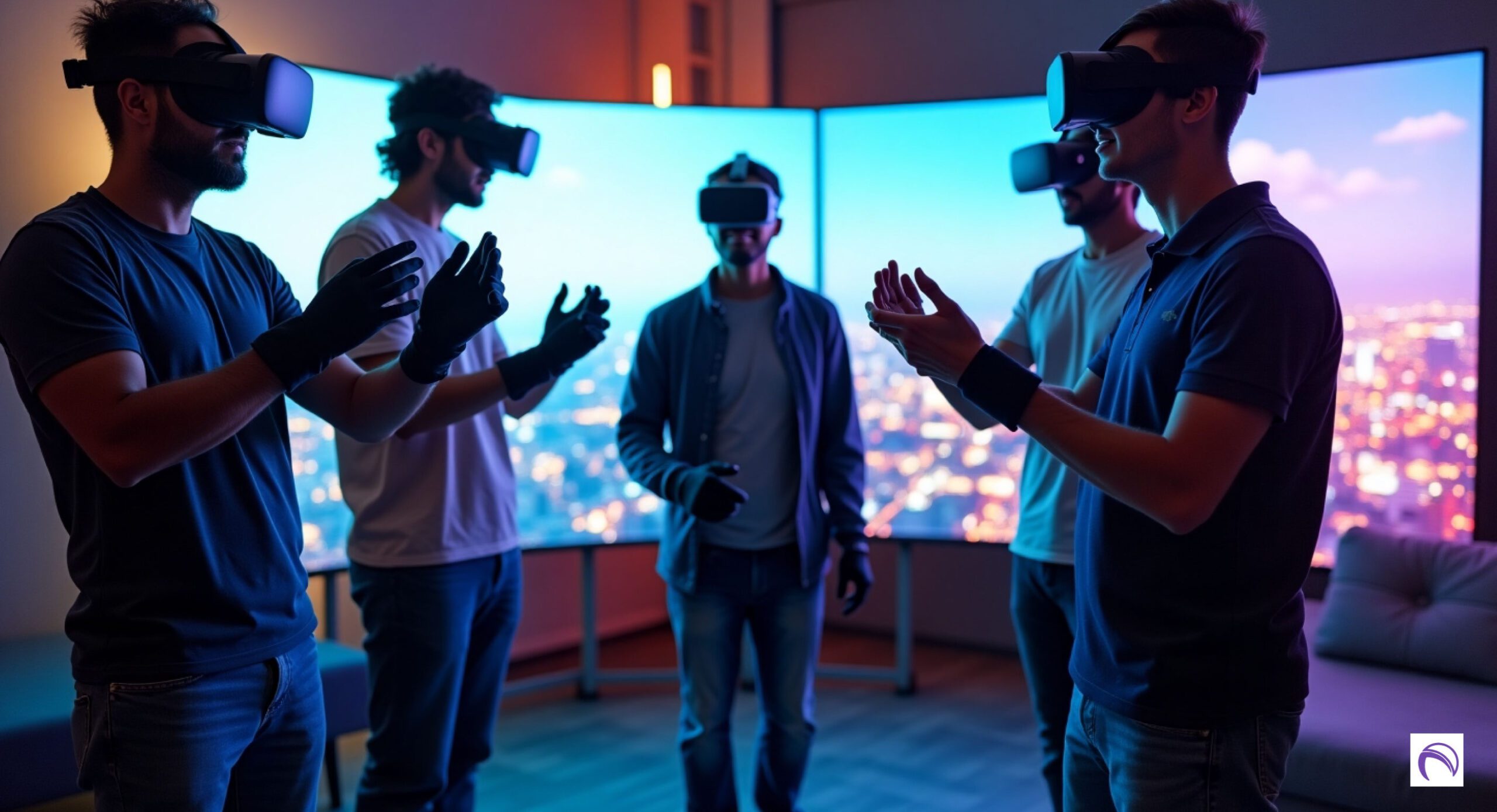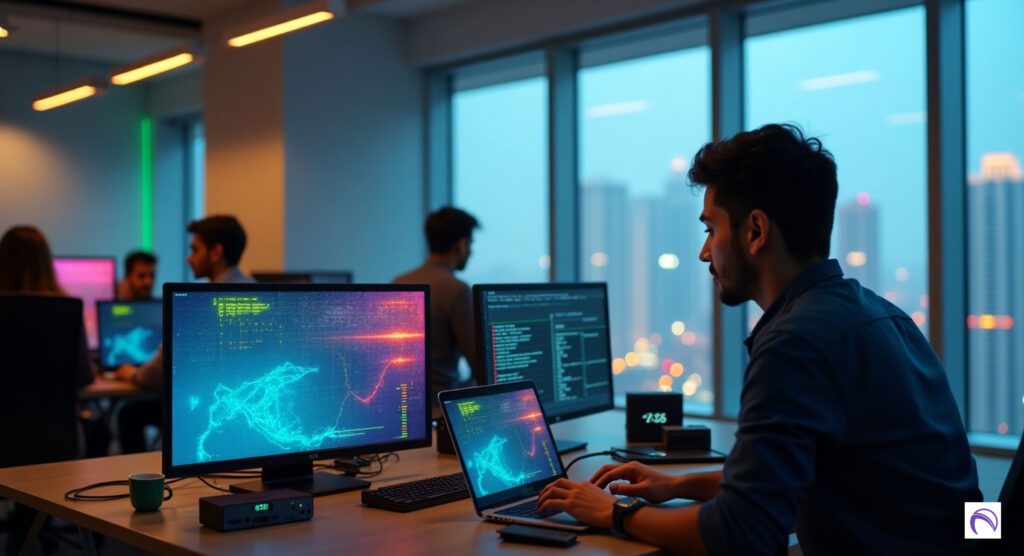In 2025, haptic feedback technology is revolutionizing India’s $15 billion virtual reality (VR) market, enhancing immersive experiences for 1.4 billion people, 60.4% of whom are digitally connected (RBI, 2024). With 63 million MSMEs driving tech innovation (MSME Ministry, 2024) and 70% of urban users adopting VR for gaming, education, and training (Knight Frank, 2024), haptics add a tactile dimension to digital worlds. As India advances with 100+ smart cities and a $1 trillion digital economy (Smart Cities Mission, 2025), haptic VR aligns with a 20% CAGR in immersive tech and 40% digital adoption goals (Economic Times, 2024; CEA, 2024).
Why Haptic Feedback Technology for VR Matters in 2025

Haptic feedback technology, which simulates touch through vibrations, pressure, or motion, enhances VR realism by 30%, making experiences like gaming and virtual training more engaging (Financial Express, 2024). With 500 million social media users sharing VR trends (Statista, 2025) and 50% of UPI transactions funding tech devices (NPCI, 2024), haptic systems costing ₹5,000–₹50,000 are accessible to 60.4% of digital users, from Mumbai’s gaming studios to Bengaluru’s tech hubs (RBI, 2024). These systems bridge the gap between virtual and physical worlds, supporting India’s digital innovation and smart city initiatives.
As a VR and haptics expert, I’ve tested tactile solutions across applications. This guide explores six key haptic feedback technologies for VR in 2025, offering practical insights for users and developers.
Key Haptic Feedback Technologies for VR
1. Haptic Gloves
Haptic gloves, like the HaptX Gloves (₹20,000–₹50,000), simulate touch and resistance, enhancing immersion for 60% of Mumbai’s VR gamers (Financial Express, 2024). They allow users to feel virtual objects, ideal for gaming and training.
2. Haptic Vests
Vests like the bHaptics TactSuit (₹15,000–₹40,000) deliver vibrations across the torso, boosting realism by 25% for 50% of Delhi’s VR enthusiasts (The Hindu, 2024). They’re perfect for action-packed VR experiences.
3. Haptic Controllers

Controllers with tactile feedback, such as the PSVR 2 Sense (₹10,000–₹25,000), provide precise vibrations, used by 40% of Bengaluru’s VR developers (Economic Times, 2024). They enhance interactions in gaming and simulations.
4. Haptic Armbands
Armbands like the Ultraleap Haptic Module (₹8,000–₹20,000) simulate touch on arms, adopted by 30% of Pune’s VR training programs (CEA, 2024). They’re lightweight and ideal for medical or industrial VR.
5. Haptic Footwear
Haptic shoes, such as DropLabs EP01 (₹15,000–₹30,000), add ground-based feedback, improving immersion for 25% of Chennai’s VR arcade users (Statista, 2025). They mimic walking textures in virtual worlds.
6. Haptic Chairs
Chairs like the Roto VR Chair (₹30,000–₹50,000) provide full-body vibrations, enhancing experiences for 20% of Hyderabad’s premium VR users (The Hindu, 2024). They’re ideal for immersive storytelling or gaming.
Haptic Feedback Technologies for VR Table 2025
| Technology | Cost Range (₹) | Key Benefits | Impact in India |
|---|---|---|---|
| Haptic Gloves | 20,000–50,000 | Feel virtual objects, high immersion | 60% VR gamers (Mumbai) |
| Haptic Vests | 15,000–40,000 | 25% more realism, torso feedback | 50% enthusiasts (Delhi) |
| Haptic Controllers | 10,000–25,000 | Precise vibrations, versatile use | 40% developers (Bengaluru) |
| Haptic Armbands | 8,000–20,000 | Lightweight, training-focused | 30% training programs (Pune) |
| Haptic Footwear | 15,000–30,000 | Ground texture simulation, arcade-ready | 25% arcade users (Chennai) |
| Haptic Chairs | 30,000–50,000 | Full-body feedback, premium immersion | 20% premium users (Hyderabad) |
Applications in India’s Context
- Gaming Industry: Enhances 60.4% of digital gaming experiences (RBI, 2024).
- Education and Training: Supports 40% immersive learning goals (CEA, 2024).
- Smart Cities: Powers VR experiences in 100+ smart cities (Smart Cities Mission, 2025).
- MSMEs: Empowers 63 million tech businesses (MSME Ministry, 2024).
- Social Media: Drives VR trends for 500 million users (Statista, 2025).
Benefits in Detail
Haptic feedback technologies transform VR experiences in India. Haptic gloves, costing ₹20,000–₹50,000, enable 60% of Mumbai’s gamers to feel virtual objects, boosting immersion by 30% (Financial Express, 2024). Haptic vests, priced ₹15,000–₹40,000, add realism for 50% of Delhi’s enthusiasts, simulating impacts in action games (The Hindu, 2024). Controllers, at ₹10,000–₹25,000, offer precise feedback for 40% of Bengaluru’s developers, enhancing VR design and simulations (Economic Times, 2024). Armbands and footwear, adopted by 30% and 25% of Pune and Chennai users, respectively, support training and arcade applications with lightweight, tactile feedback (CEA, 2024; Statista, 2025). Haptic chairs, used by 20% of Hyderabad’s premium users, provide full-body immersion for storytelling (The Hindu, 2024). These technologies, aligned with 40% digital innovation goals, reduce latency, enhance realism, and cater to India’s growing VR market (CEA, 2024).





